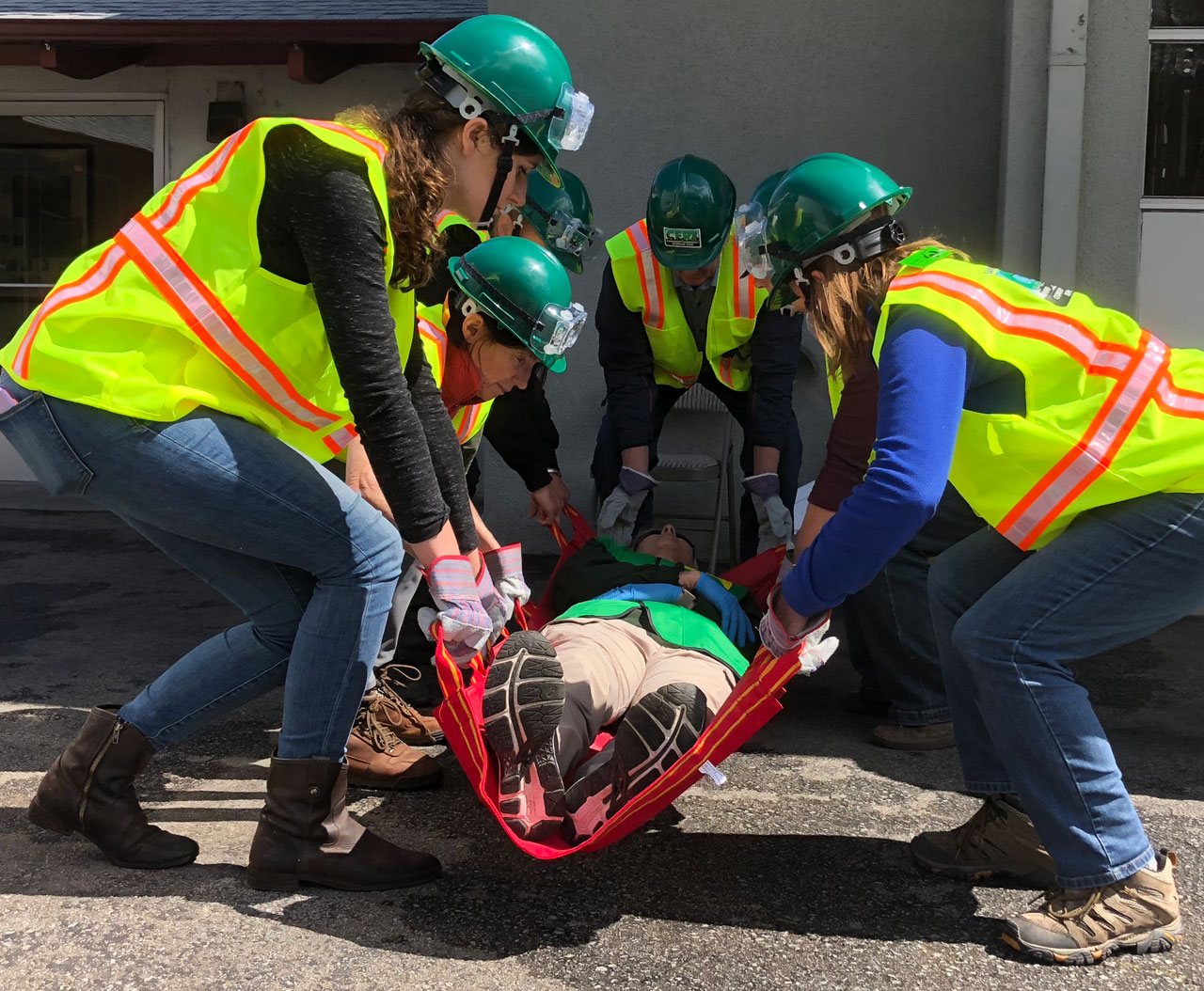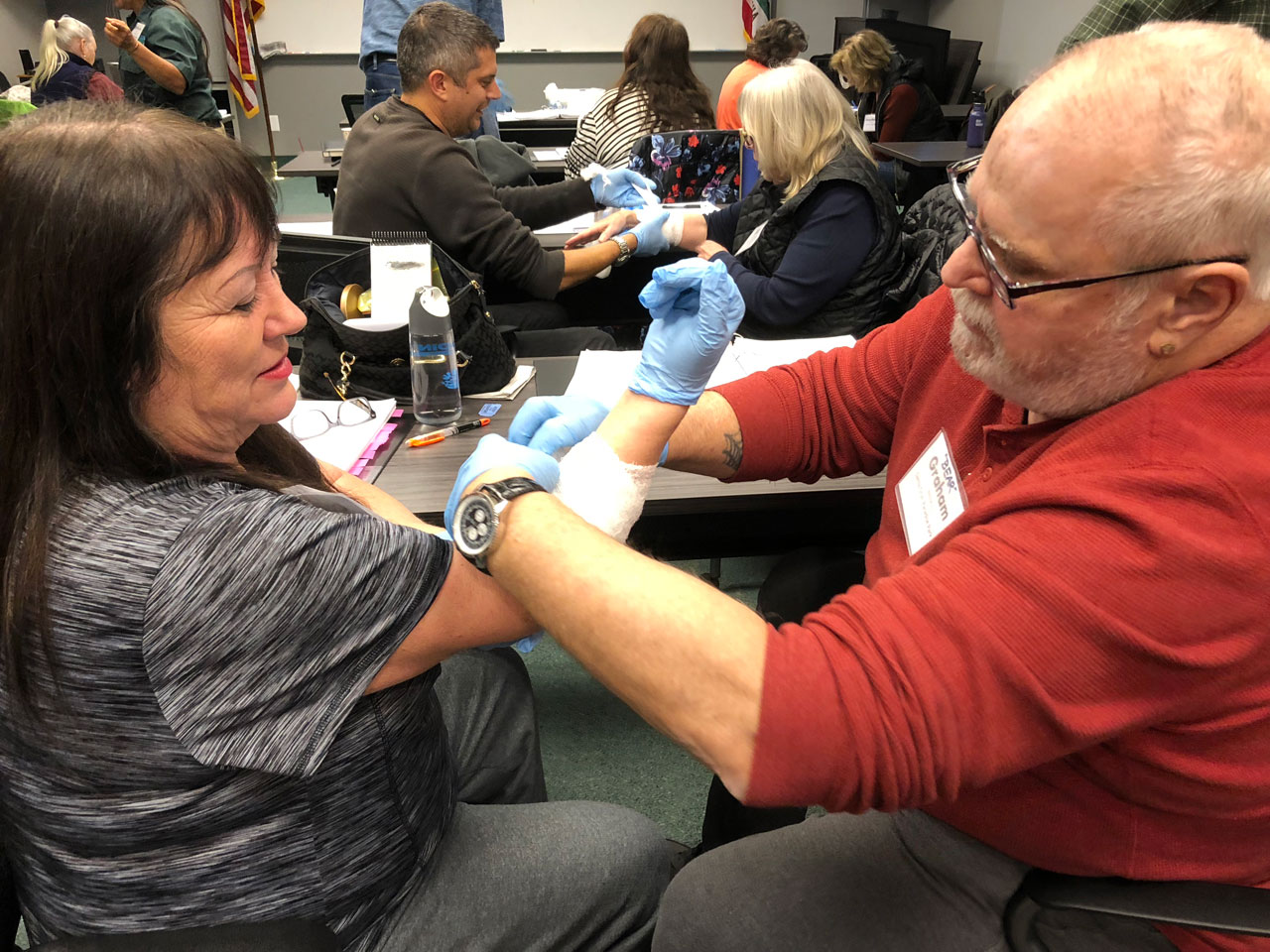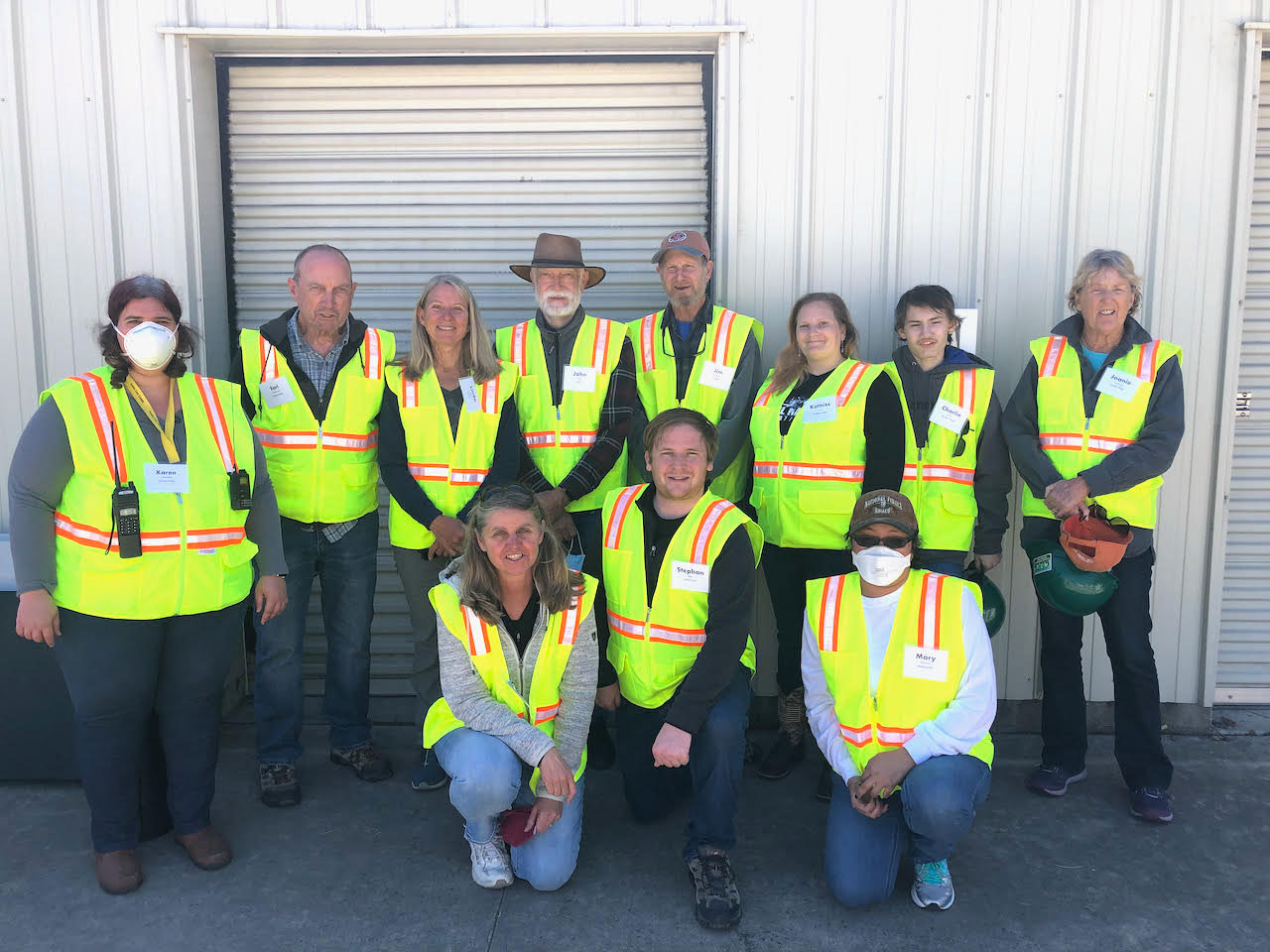With CERT training, ordinary civilians can play critical roles in protecting their communities.

With CERT training, volunteers can learn firefighting skills. CERT Auxiliary of Santa Cruz County
BY: Ray Delgado
It’s the middle of fire season again, marked this month by two back-to-back anniversaries. On Aug. 16, 2020, fires sparked near Davenport and Waddell Creek and grew into the CZU Lightning Complex fires, which devastated swaths of San Mateo and Santa Cruz counties. A year later, on Aug. 14, 2021, the Caldor Fire began its rampage across the Lake Tahoe region, hitting El Dorado, Alpine and Amador counties.

Most of us watch these fires play out with dread and anguish, not knowing how to help the situation beyond a financial donation to a disaster relief agency. And we feel empathy for the exhausted first responders who work nonstop to extinguish the flames.
But with some effort and training, we civilians can play an important role in helping before, during, and after a disaster through a program offered by the Federal Emergency Management Agency. FEMA’s Community Emergency Response Team provides opportunities for volunteers to play critical roles in real-life disasters like wildfires, earthquakes and terrorist events.
The CERT program provides a “consistent volunteer training program that professional responders can rely on” before and during a disaster situation. These teams of community volunteers perform basic response activities, such as checking in on neighbors, distributing information to the public, supporting emergency operations centers, and helping to manage traffic and crowds.
CERT volunteers serve as disaster preparedness ambassadors in their local communities, spreading the gospel of preparedness to their families, neighbors, co-workers, and other community members. And they are trained to assist those same people during emergencies when professional responders are not immediately available.
Finding a Local Program
The programs may be offered by local fire departments, city agencies, universities, or large businesses. To find a local program, put in your city or address on this page and click for more information.
The website also explains how to create a CERT program, if you meet certain criteria or there aren’t existing programs in your area. FEMA also produced a video overview of the CERT program and how it functions in various areas.
Facebook can also be a great place to explore your local CERT groups and how they operate. You can follow the groups to receive updates about safety issues, advice, community events and volunteer opportunities.
In El Dorado County, the El Dorado County Sheriff”s Office organizes CERT training with local fire departments, such as the Mosquito Fire Protection District in Placerville.

Residents of Santa Cruz County can look to the countywide CERT Auxiliary of Santa Cruz County website for a good overview of CERT program. The auxiliary supports the county’s CERT Council and other disaster service organizations. “When a widespread disaster strikes, professional responders are likely to be overwhelmed and unavailable for many,” the site states. “People will have to rely on each other, as history in the Loma Prieta earthquake reflects. Now FEMA predicts we may be on our own from 7–14 days, particularly if living in a remote area or one with limited access.”
County residents are encouraged to take a 22-hour FEMA-certified course to develop “life-saving skills with emphasis on decision-making ability, rescuer safety, and doing the greatest good for the greatest number of people.” Volunteers work with neighborhood teams to provide immediate assistance by “triaging those injured, putting out small fires, turning off utilities, performing search and rescue, and collecting disaster intelligence for assisting professional responders in setting priorities in trying to allocate limited resources.” The site also has an extensive Frequently Asked Questions page that addresses common questions raised by people interested in participating in a CERT program.
Education for Emergencies
Depending on the CERT you register with or create, you may be able to select from nine available units based on your interest or experience, in consultation with CERT program leaders. The units, which are listed here, cover preparedness, organization, medical operations, psychology, fire safety, search and rescue, and terrorism.
Within the various units, there are necessary roles that are structured like a command center team, with various responsibilities:

For those who are not certain to be available to report to the local CERT command center during an emergency because of family or local obligations during the crisis, CERT offers other non-disaster opportunities:
FEMA also offers a Youth Preparedness Council that provides opportunities for young people to support disaster preparedness plans locally and nationally. The competitive application-based program usually opens at the beginning of the year and is open to students in grades 8-11.
And if you’re on the fence about volunteering for such an important responsibility, you can still make a difference by being disaster-ready in your own household, with plans for how to deal with earthquakes, floods, extreme heat, power outages, wildfires, and terror attacks. The Ready.gov website offers many tips on these subjects and links to sign up for emergency alerts and public safety apps.
Stay safe out there!

Long form articles which explain how something works, or provide context or background information about a current issue or topic.